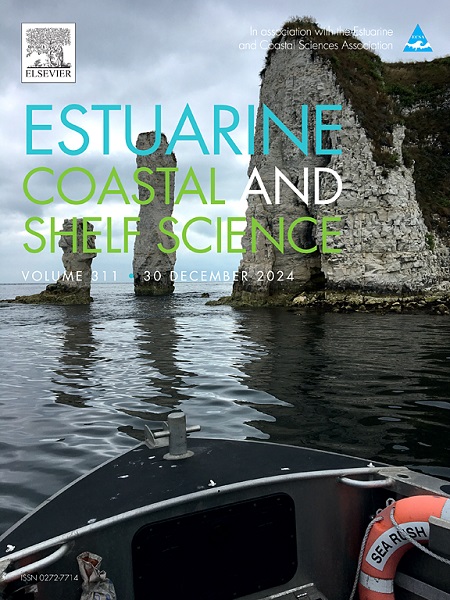Physiological response to salinity variation in the European native oyster Ostrea edulis from a hyperhaline lagoon
IF 2.6
3区 地球科学
Q1 MARINE & FRESHWATER BIOLOGY
引用次数: 0
Abstract
This study investigates the acute (48h) and acclimated (1 month) physiological responses of the European native oyster, Ostrea edulis, individuals inhabiting an hyperhaline lagoon to varying salinities (20, 30, 40, 50, and 60 PSU). Significant differences were identified across all physiological measurements (clearance rate, ingestion rate, absorption efficiency, absorption rate, oxygen consumption and scope for growth) for both salinity and time factors, except for the interaction effects on absorption efficiency and scope for growth.
The study revealed the capability of the flat oyster to adjust their energetic physiology to a wide range of salinities, from 20 to 50 PSU. Time-dependent changes were observed, with significant physiological adjustments between T1 and T2, particularly at 20 PSU, where deleterious effects were observed in the acute exposition but acclimation was observed after one month. On the contrary, individuals at 50 PSU showed a similar response to 30 and 40 PSU for the acute exposition, but a lower fitness in the long-term. For 60 PSU, physiological decline was observed during the experiment, highlighting a potential salinity threshold for the species' survival.
Overall, this study demonstrates the complex interactions between salinity, exposure time, and physiological and biometric responses in the flat oyster, highlighting the importance of assessing both acute and long-term responses to environmental changes. The findings contribute to a better understanding of the adaptability and resilience of this species in the face of fluctuating salinity levels, which is crucial for ecological and restoration practices.

求助全文
约1分钟内获得全文
求助全文
来源期刊
CiteScore
5.60
自引率
7.10%
发文量
374
审稿时长
9 months
期刊介绍:
Estuarine, Coastal and Shelf Science is an international multidisciplinary journal devoted to the analysis of saline water phenomena ranging from the outer edge of the continental shelf to the upper limits of the tidal zone. The journal provides a unique forum, unifying the multidisciplinary approaches to the study of the oceanography of estuaries, coastal zones, and continental shelf seas. It features original research papers, review papers and short communications treating such disciplines as zoology, botany, geology, sedimentology, physical oceanography.

 求助内容:
求助内容: 应助结果提醒方式:
应助结果提醒方式:


